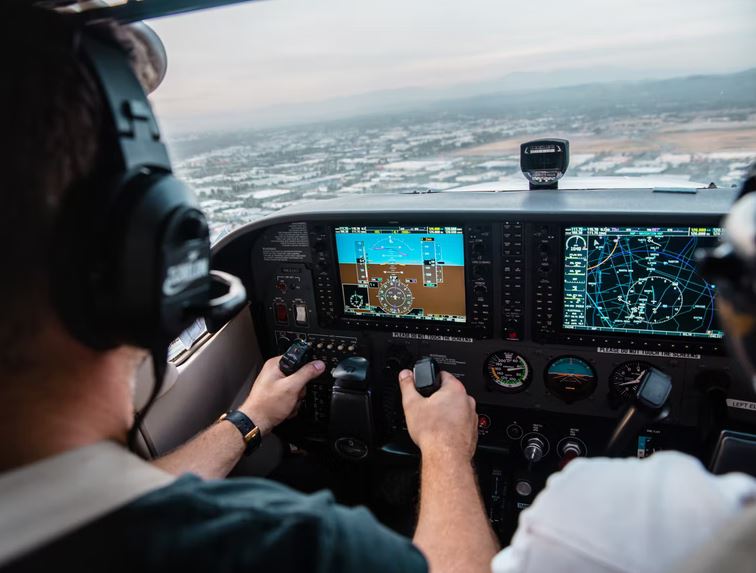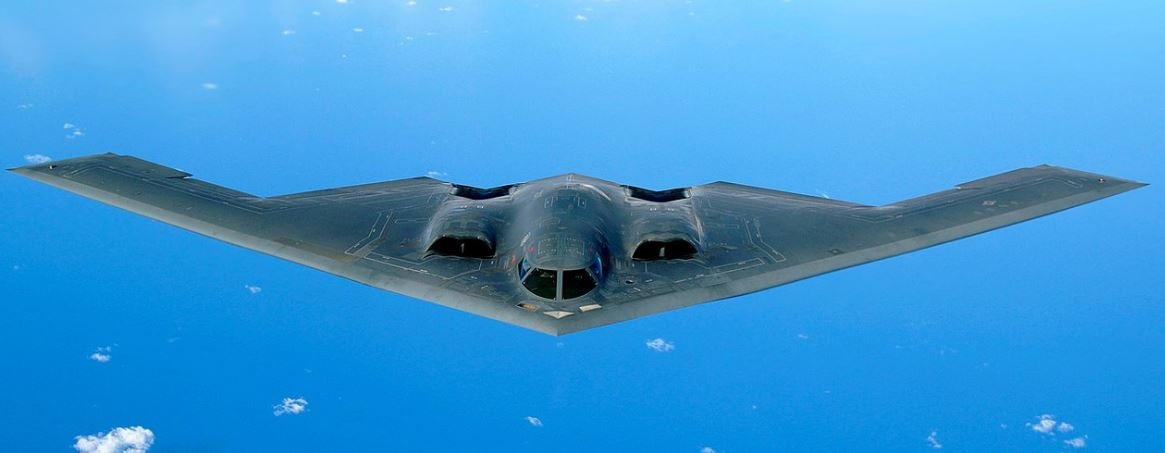The B-2 Spirit, also known as the Stealth Bomber, is an American heavy penetration strategic bomber with low observable stealth technology designed to penetrate dense anti-aircraft defenses. It is a flying wing design with a two-person crew. Flying B2 Stealth Bomber should require a pilot to have some mental skills. The bomber can carry both conventional and thermonuclear weapons, including eighty 500-pound (230-kg) JDAM Global Positioning System-guided bombs (Mk 82) and sixteen 2,400-pound (1,100-kg) B83 nuclear bombs.
The B-2 is the only aircraft known to be capable of carrying large air-to-surface standoff weapons while remaining stealthy. During the Carter administration, development began under the “Advanced Technology Bomber” (ATB) project, and its expected performance was one of the reasons for the supersonic B-1A bomber’s cancellation. Although the B-2 Spirit is a stealth bomber, there are a lot of famous warplanes in history that you might want to know. During the Reagan administration, the ATB project was continued, but concerns about delays in its implementation led to the reinstatement of the B-1 program as well. Throughout the development process, program costs increased. Each aircraft cost an average of US$737 million to design and build, according to Northrop, later Northrop Grumman (in 1997 dollars). Spare parts, equipment, retrofitting, and software support cost an average of $929 million per aircraft. In 1997, the total program cost per aircraft was $2.1 billion, which included development, engineering, and testing.
The project was controversial in the United States due to its high capital and operating costs. The Joint Chiefs of Staff and Congress. The end of the Cold War in the latter half of the 1980s drastically reduced the need for aircraft, which had been designed to penetrate Soviet airspace and attack high-value targets. Congress cut plans to buy 132 bombers from 132 to 21 in the late 1980s and 1990s. A B-2 bomber crashed shortly after takeoff in 2008, but the crew ejected safely. The US Air Force still has 20 B-2 bombers in service, with plans to keep them in service until 2058.
With a range of over 6,000 nautical miles (6,900 mi; 11,000 km) on internal fuel and over 10,000 nautical miles (12,000 mi; 19,000 km) with one midair refueling, the B-2 is capable of all-altitude attack missions up to 50,000 feet (15,000 m). After the Lockheed F-117 Nighthawk attack aircraft, it entered service in 1997 as the second aircraft designed with advanced stealth technology. Despite being designed primarily as a nuclear bomber, the B-2 was first used in combat in the Kosovo War in 1999, dropping conventional, non-nuclear ordnance. Later, it was deployed to Iraq and Afghanistan.
The Conceptual Design
The B-2 Spirit was designed to take over the US Air Force’s critical penetration missions, allowing it to travel deep into enemy territory and deploy ordnance, including nuclear weapons. The B-2 is a flying wing aircraft, which means it doesn’t have a fuselage or a tail. The B-2 has significant advantages over previous bombers due to its combination of low-observable technologies, high aerodynamic efficiency, and large payload. Low observability allows for more maneuverability at high altitudes, extending the range and field of view of onboard sensors. According to the US Air Force, its range is approximately 6,000 nautical miles (6,900 mi; 11,000 km). The B-2 refuels every six hours at cruising altitude, consuming up to 50 tons of fuel at a time.
The B-2’s development and construction required pioneering use of computer-aided design and manufacturing technologies due to the aircraft’s complex flight characteristics and design requirements to maintain very low visibility to multiple means of detection. The B-2’s prime contractor is Northrop Grumman, with Boeing, Raytheon (formerly Hughes Aircraft), G.E., and Vought Aircraft contributing as subcontractors. The B-2 looks a lot like earlier Northrop planes like the YB-35 and YB-49, which were both flying wing bombers that were canceled in development in the early 1950s, allegedly due to political reasons.
About 80 pilots fly the B-2 as of September 2014. Each plane has a two-person crew, with a pilot in the left seat and a mission commander in the right, with room for a third crew member if necessary. The B-1B has a four-person crew, while the B-52 has a five-person crew. The B-2 is highly automated, and unlike most two-seat aircraft, one crew member can sleep in a camp bed, use a toilet, or prepare a hot meal while the other monitors the aircraft. To improve crew performance on long sorties, extensive sleep cycle and fatigue research were conducted.
The Flight Control
The B-2 uses a complex quadruplex computer-controlled fly-by-wire flight control system to address the inherent flight instability of a flying wing aircraft. This system can automatically manipulate flight surfaces and settings without direct pilot inputs to maintain aircraft stability. Pitot-static sensing plates, rather than traditional pitot tubes, provide information on external conditions such as the aircraft’s current airspeed and angle of attack to the flight computer. Traditional pitot tubes would compromise the aircraft’s stealth capabilities. The flight actuation system was designed with a high level of redundancy and fault-diagnostic capabilities, and it includes both hydraulic and electrical servo actuated components.
Northrop had looked into several ways to apply directional control while keeping the aircraft’s radar profile as low as possible, eventually settling on a combination of split brake-rudders and differential thrust. Early on, engine thrust became an important part of the B-2’s aerodynamic design process; thrust affects not only drag and lift but also pitching and rolling motions. The trailing edge of the wing has four pairs of control surfaces; while most surfaces are used throughout the flight envelope, the inner elevons are normally only used at slow speeds, such as landing. To avoid potential contact damage during takeoff and to maintain a nose-down pitching attitude, all elevons remain drooped until sufficient airspeed is achieved.
The Accidents
B-2 Spirit of Kansas, 89-0127, crashed on the runway shortly after takeoff from Andersen Air Force Base in Guam on February 23, 2008. Spirit of Kansas had logged 5,176 flight hours and was operated by the 393rd Bomb Squadron, 509th Bomb Wing, Whiteman Air Force Base, Missouri. It was the first time a B-2 had crashed. The two-person crew of the plane ejected safely and survived the crash. The plane was destroyed, with a hull loss of $1.4 billion. Following the accident, the Air Force placed the B-2 fleet on hold until it was cleared for flight 53 days later, on April 15, 2008. Moisture in the aircraft’s Port Transducer Units during air data calibration, which distorted the information sent to the bomber’s air data system, was later determined to be the cause of the crash. As a result, the flight control computers calculated an incorrect airspeed and a negative angle of attack, causing the plane to pitch 30 degrees upward during takeoff.
Another serious incident involving a B-2 occurred in February 2010 at Andersen AFB, this time involving the AV-11 Spirit of Washington. While on the ground, the plane was severely damaged by fire and required 18 months of temporary repairs before it could fly back to the mainland for more extensive repairs.

